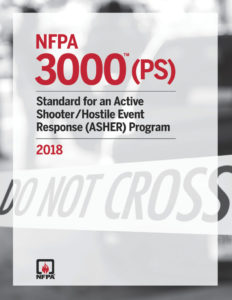The January/February edition of the Minnesota State Fire Chiefs Magazine is dedicated to discussing many of the emerging issues facing the Minnesota fire service specifically health, safety, wellness, and legislative advocacy. There is no denying that the fire service we know today is very different then in years past. While many of the challenges are not necessarily new, we have become more educated and aware of the significant issues that face our first responders. As leaders, we are leveraging the use of data and best practices to implement sound policies to help keep our people safe.

A retired fire chief recently stopped by my office and noticed the ballistic helmet and vest sitting on the counter. When I started my career in 1998, ballistic gear was not part of the personal protective equipment (PPE) list for firefighters; to be frank it wasn’t even on my list of wildest possibilities. Fast forward twenty-years and I am purchasing active shooter/hostile event equipment to ensure that our firefighters are properly equipped for responding to high-risk incidents. Our firefighters are cross training with law-enforcement on how to jointly respond to active shooter, post-blast, and other hostile incidents. Our mission of saving lives guides our decision to invest in the training and equipment to keep our people safe so that we can better respond to the myriad types of calls our firefighters are now facing.
Cancer, mental health, and cardiac disease have taken center stage on the growing list of issues facing the fire service. Through evidence-based research and data, we are learning that the risks associated with our profession are far greater than what I was taught in my orientation program in the 1990’s. Minnesota is not alone on sounding the alarm on recruitment and retention; a recent study in Pennsylvania calls it a “public safety crisis” and their state law makers are calling for action to address the findings of the study.
As we prepare for the upcoming legislative session, it is important that the Minnesota fire service actively works to educate our elected officials on the real issues and concerns we face on a daily basis. I am excited to welcome our new government relations firm, Lockridge Grindal Nauen, to our team.
On a national level, I encourage every chief to review the final draft of OSHA standard 1910.156, “Emergency Responder Preparedness Program Standard.” Formally the Fire brigades standard, the new language has sweeping changes to federal law that govern fire department operations. It is critical that fire chiefs become familiar with the proposed changes and monitor the progress as the new language is ultimately adopted.
My best wishes for a happy and healthy New Year!
Note: this article appeared in the January/February issue of the Minnesota State Fire Chiefs Association magazine. For other articles by leading fire service professionals, join the MSFCA today! Magazine memberships are available!